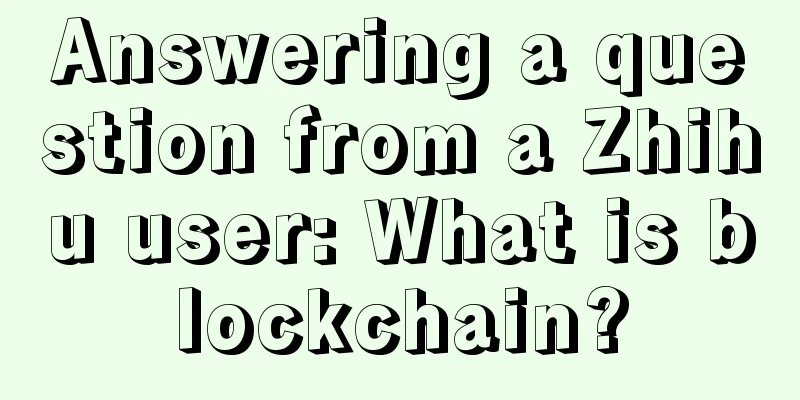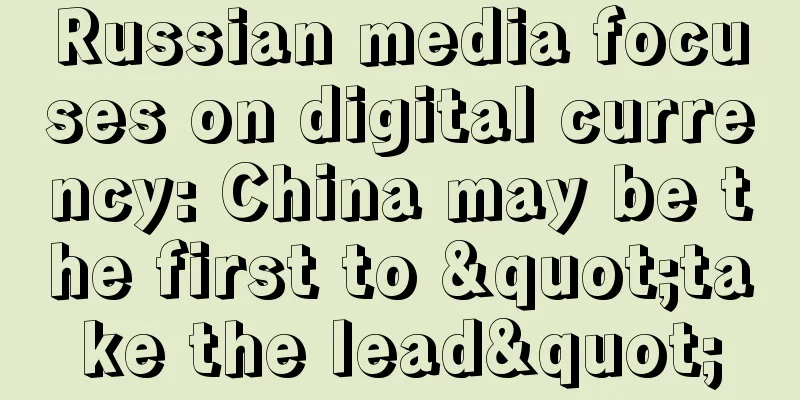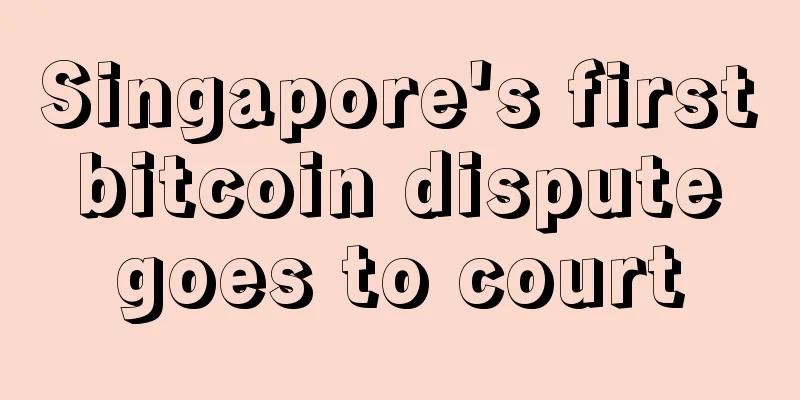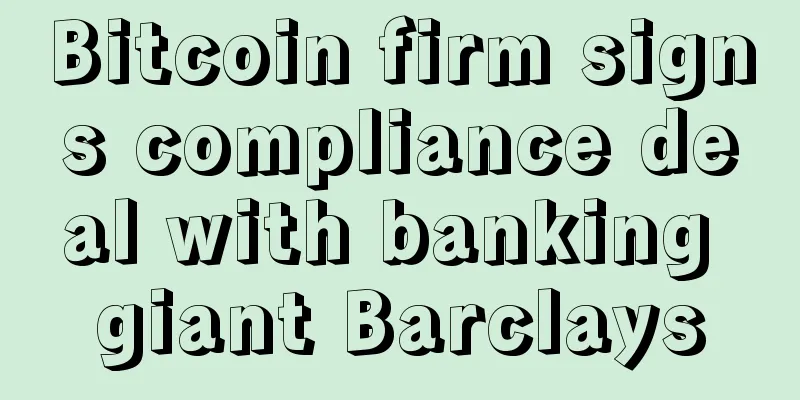Answering a question from a Zhihu user: What is blockchain?

|
As an older female in the Bitcoin circle, she was once a translator for the cryptocurrency media Babbitt, and is currently the CCO (Chief Cute Official) of Bitmain. Since I participated in the "Blockchain - New Economic Blueprint" organized by the Wanxiang Organization in October 2015, I feel that the currency circle has gradually become clearly divided. On one side are the Bitcoin diehards who can't stand blockchain, and on the other side are the new blockchain faction who don't play with Bitcoin. In a sense or to some extent, they all think that the other side is low-class, and slowly a new level of contempt chain is formed. Well... I stand in the middle. Before we start, let me throw out a few points:
Blockchain technology is essentially a product that has been separated from Bitcoin, just like the placenta that incubates a child. In the mind of Satoshi Nakamoto, he is just the underlying encryption protocol of Bitcoin. After the roller coaster incident in November 2013, China has demonized Bitcoin, mainstream media have banned Bitcoin, and cities related to Bitcoin have been labeled as anti-socialist. How can Bitcoin find a second spring? This question has puzzled the cryptocurrency community for two years. After the freezing period, everyone huddled together, relying on faith and will to pay for their beliefs. Before November 2013, the popularity of the cryptocurrency community had always been in a terrifying surge, and with this wave of damage, those who gradually left the market either had firm beliefs or relied on an impeccable business model. When both were present, well, Bitmain was created. It left its peers behind, standing proudly in the snow, and standing out from the crowd. Please forgive me for the little commercial. If I don't do it, who will? Oh hahahaha. Just when the cryptocurrency circle has been waiting for a period of breaking the ice, the concept of blockchain seems to have spread all over the country in an instant, and everyone is telling each other, which undoubtedly brings a touch of warmth to Bitcoin. So, when did blockchain break away from Bitcoin and become more prominent?
This story begins in October 2015. At that time, The Economist published an article titled The great chain of being sure about things. The article gave an example, which roughly means: Ms. Ai lives in Honduras. She has lived in her own house for many years. One day, Ms. Ai was summoned by the court. C applied to the court to evict Ms. Ai. It turned out that C's name was registered in the National Property Bureau, and then the house was demolished. But later, after the court's verification, it was found that the house actually belonged to Ms. Ai, but the real estate had been destroyed. Ms. Ai could only cry silently... The New Economist uses this simple example to deeply portray the current state of society, the fact that records can be tampered with at will. Bitcoin happens to be able to solve this difficult problem, so what technology can be used to ensure that such records are true, unique and unchangeable? The answer is obvious. (Friends who are interested in the article can read: http://www.8btc.com/technology-behind-bitcoin. Of course, for friends who are good at English, I strongly recommend that you check the original text, because although the translator is not willing to change the article's point of view, there will be emotional tendencies when translating.) In October 2015, Wanxiang Group held a global blockchain summit in Shanghai titled "Blockchain - New Economic Blueprint". Many people who used to play Bitcoin attended the summit. Many warriors have struggled out of the quagmire of Bitcoin and transformed themselves into blockchain technology experts. I give it five stars for the whitewashing effect, of course there is no derogatory meaning here. It is true that the public's perspective on an industry is easily guided, just as no matter how prosperously blockchain develops, Bitcoin still cannot erase its rusty stains. In November and December 2015, several blockchain summits were held at the Beijing Museum of Finance. What was the content of the summit? The content involved blockchain and insurance model? One of the guest speakers was the vice chairman of the China Insurance Regulatory Commission, and of course there was also the Bitcoin leader, Douban Zhihu celebrity: Li Xiaolai. The author also learned privately that UnionPay has actually paid attention to Bitcoin for a long time and actively participated in the discussion of blockchain. Later, our company donated several blockchain data processing servers S7 and U3, which are still mining Bitcoin in UnionPay's laboratory. On December 16, 2015, McKinsey published a research report on "Blockchain Technology", which stated that the innovation and application of blockchain in the financial field must overcome four major challenges: joint experiments, solid experiments, small networks, and economies of scale. In January 2016, a blockchain hackathon called Blockchain Hackathon jointly organized by Deloitte and Wanxiang Blockchain Lab in Shanghai came to a successful conclusion. On January 20, 2016, the central bank held a digital currency seminar in Beijing, and there were reports that it would launch a central bank digital currency. This news makes me feel happy and sad. I am happy that the central bank finally recognizes our efforts over the years. Sprinkle flowers~ (I have to calculate that Bitcoin is already 7 years old! 7 years, comrades, your children should have graduated from elementary school and entered junior high school!) I really have to shed tears. The central bank recognizes the significance of digital currency: reducing the cost of currency issuance and circulation, improving the convenience and transparency of economic transactions, and at the same time proposes to curb illegal and criminal activities such as money laundering and tax evasion. At this point, the answerer observed the sky at night and calculated with his fingers, is the regulation of digital currency far away? What worries me is that Bitcoin itself is a decentralized payment system that does not require a trusted third party. Isn’t the largest trusted third party in transactions currently the Central Bank? How could she do such a self-contradictory thing? So the conclusion is that either the news is false, or it is inferred that this currency cannot be a decentralized digital currency. On January 29, 2016, PricewaterhouseCoopers announced a strategic partnership with Bitcoin company Blockstream to provide blockchain technology services. Blockstream is the center of the recent controversy over capacity expansion.
Blockchain is a technical solution that uses decentralization and trustlessness to collectively maintain the reliability of a data book. The solution requires any number of nodes in the participating system to generate a series of data blocks (blocks) using cryptographic methods. Each block contains all the information exchanged in the system within a certain period of time, and generates a data fingerprint to verify the validity of its information and link to the next database block. Speak human language! ┗|`O′|┛ Ouch~~ Well~ Blockchain technology is actually a collection of technical solutions. It is an irreplaceable credit certificate based on computer encryption technology. Technically, it is a distributed data block, and each block contains the information of a whole blockchain. This means that the blockchain can prove its guilt without a trusted third party, and solve the problem of how to establish a trust mechanism between two strangers. To solve the trust problem between strangers, we must first analyze the characteristics of information or contracts, and then use the blockchain to achieve the following effects:
First, because the entire network has no central authority or core ruler. The system is not centralized, and ownership belongs to individuals: individual nodes. The system relies on the fair constraints of multiple participants on the network, so the rights and obligations of any few nodes are equal, and each node stores all the data on the blockchain. Even if the node is damaged or attacked, it will not pose any threat to the ledger. That is to say, every child will have a complete data record in his hand. Even if someone forgets or loses it, any other person ABCD can completely restore the entire data record. The best solution for retrieving at any time is for everyone to have a copy. Torrent is the best solution for P2P. When I need it, I can retrieve it from the nearest node without any obstacles. When I don't need it, you can just lie quietly on the blockchain and do your beauty... Secondly, you have to ensure that information or contracts cannot be forged . If the account book is in the hands of one or a few people, the possibility of forgery is very high, but everyone has a book in their hands. Unless you convince more than 51% of the people in the entire game to change a certain account, your tampering will be invalid. This is also the advantage of collective maintenance and supervision by the general public. Satoshi Nakamoto's approach is very clever. Since he cannot prevent others from forging with fancy purposes, he maximizes the cost of forgery, thus greatly avoiding the risk of forgery. Of course, this risk avoidance is not 100%. (Of course, it is not ruled out that foolish children in the future will forge information for some purpose without caring about the cost of forgery.) It is just that as the number of Bitcoin or blockchain nodes increases, the possibility of forgery becomes smaller and smaller. Therefore, as long as there are more nodes on the blockchain and the computing power is stronger, the data in the system will be more secure. So currently three of the world’s five largest mining pools, AntPool, GuoPool, and F2Pool, are all in China, so there are some small concerns overseas...hehe. Secondly, the information on the blockchain must be irreversible and cannot be destroyed at will. The Bitcoin system is open source, and the entire system must be open and transparent. Therefore, after a transaction is broadcasted to the entire network, it will be successfully recorded if it reaches more than 6 confirmations, and it is irreversible and irrevocable. Therefore, even if you later find that the money you sent was sent to the wrong address, you cannot withdraw it again. Finally, blockchain information must be verifiable. I can extract information to determine whether your record is real or forged.
The blockchain mechanism is currently divided into two main categories: POS (proof of stake) proof of rights mechanism and POW (proof of work) proof of workload mechanism. In order for Satoshi Nakamoto to prove his credibility in this payment system, the first problem he had to solve was double spending, or repeated payments. Just like in the current legal currency system, how to eliminate the problem of counterfeit money, the mainstream society's approach is to force people to stop making counterfeit money through the formulation of laws and regulations by the state, while Satoshi Nakamoto eliminated the human factor with the blockchain system itself and completely relied on technology to solve the double spending problem. Emma →_→ Satoshi Nakamoto is such a bad guy! He doesn't give anyone any chance to be corrupt. Bitcoin uses the proof-of-work mechanism, which rewards users based on the amount of work they do. The disadvantage of this is that computing power can easily become centralized. The transaction mechanism of Bitcoin is to generate a block every ten minutes, which means that every ten minutes, the computer packages all the transactions in the network into a block. Miners are the ones who compete for the right to record the blockchain in the packaging game. Whoever can solve the value of the mathematical proposition SHA256 the fastest and most accurately wins the right to package and record the ten-minute block. And every transaction in these ten minutes will be stamped with a timestamp. Of course, the miners' work is not in vain. Once whoever wins the packaging right will receive 25 bitcoins as a reward. So you can also think of Bitcoin as a bargaining chip for maintaining fairness and justice. How did Satoshi Nakamoto prove his credibility? This depends on how blockchain works.
Industries currently connected to blockchain digital endorsement
Therefore, although blockchain technology is booming, there are still some constraints in blockchain finance. For example, as a bookkeeping system, how can blockchain solve the underlying offline frictions of the financial system? For example, in terms of Bitcoin payments, the current Bitcoin network confirms a maximum of 7 transactions per second, while Alipay confirms tens of thousands of transactions per second. In terms of convenience, it is undoubtedly not as good as WeChat and Alipay, but side chains and lightning networks are working to overcome these technical problems. For example, the cost of opening a bank account is relatively high, but it is unavoidable because it involves cross-border payments. For example, for different institutions, problems such as mismatching accounts will actually cover the payment costs. Blockchain needs to develop appropriate solutions for specific problems, which is not easy.
After I joined the cryptocurrency industry, countless friends around me came to debate with me. The topics often left me speechless, for example, why is Bitcoin valuable, what is the basis for Bitcoin's endorsement? What is the difference between Bitcoin and Q coins? As for Bitcoin, a virtual cryptocurrency, why is it fundamentally different from Q coins? Because Bitcoin is not backed by the credit of a certain company or institution. The value of Bitcoin comes from its self-proven credibility based on a mathematical system, which shatters the cornerstone of the traditional financial industry that credit requires endorsement from others. This is why others say that blockchain (or Bitcoin) solves the Byzantine Generals Problem. Its core meaning is that it solves how two anonymous parties can reach a trust consensus in a war without relying on a third-party medium. To understand this, we need to look at the origin of banks. It is generally believed that the earliest bank was the first bank established in Venice, Italy in 1407. Later, Amsterdam in the Netherlands, Hamburg in Germany, and London in the United Kingdom appeared one after another. Banks did not develop until the late 18th century and early 19th century. Here is a very vivid story: In the seventeenth century, some civilians became rich through business and had some surplus wealth. For safety, they deposited their gold in the king's treasury. There was no paper money at that time, so the so-called saving money meant depositing gold. Because the "free coinage" system was implemented at that time, anyone could take gold bars to the mint and mint them into gold coins, so the mint allowed customers to deposit gold. But unfortunately, these businessmen did not realize that the mint belonged to the king, and if the king wanted to use the gold in the mint, he could not stop it at all. In 1638, the king of England was Charles I. He went to war with the Scottish nobles. In order to raise military expenses, he requisitioned the gold of civilians in the mint and loaned it to the king. Later in 1649, he was beheaded by Cromwell. This was the famous British bourgeois revolution. For details, please refer to "Notes on British History (IV)" Although the confiscated gold was eventually returned to its original owner, the merchants felt that the mint was no longer safe. So they deposited their money with a goldsmith. The goldsmith issued a certificate for the depositor, and with this certificate, they could withdraw the gold. Soon, the merchants found that when they needed money, they didn't need to withdraw the gold at all, they just had to hand over the gold certificate to the other party. Later, the goldsmiths suddenly realized that the vouchers they issued actually had the effect of currency! Unable to resist the temptation, they began to issue "fake vouchers". But the magical thing is that as long as all customers do not come to collect gold on the same day, the "fake vouchers" are equivalent to "real vouchers". This is the origin of the "reserve system" in modern banks and the origin of the "currency creation" mechanism. The banking system can amplify the amount of credit currency, but physical currency cannot do this. Banks have been around for 600 years. Although there are differences between ancient and modern banks in terms of operations, banks are essentially trusted third-party intermediaries, and the trustworthiness here needs to be questioned. Let's analyze the historical background of the development of the banking industry. After the Industrial Revolution, mankind entered the industrial age and gradually moved from an agricultural society to an industrial society. At this time, the productivity of society was in a relatively high-speed development stage, and the connection between people was not so close. Now we are in the 21st century, and the connection between people has become closer through the Internet, which is a qualitative leap. The song goes like this: In the past, travel by car was long and letters were slow, so there was only enough time to love one person in a lifetime. Now, productivity has been greatly liberated, and artificial intelligence and technology are making new breakthroughs every day. Since the establishment of ARPANet by the Advanced Research Projects Program of the U.S. Department of Defense in 19969, the Internet has been developed for 47 years. We are still living in the financial system of the past 600 years. The establishment and disintegration of the system are gradual, but after the Internet, we have to admit that this touchpoint is replacing the replacement of the traditional system in the form of an explosive point. Collapse may become a unique term in financial history. As mentioned in the story above, and as the case of Ms. Ai from the New Economist mentioned above shows: human nature cannot be violated . Regardless of whether you are a third-party trust institution, whether you are a king, a goldsmith, or a bank that appeared later, human nature can be restrained through the system for a period of time. But the consequences of power are bound to be human nature and greed that cannot be cured and eradicated. However, in the face of the huge temptation of wealth, human nature and greed are like ants that penetrate into a big tree, slowly eating away the system and credit bit by bit... So is it with banks, so is it with countries. If, in the current social context, we still stick to the credit mechanism established hundreds of years ago, which has been witnessed by generations of history, the concentration of power will inevitably lead to corruption. The credit mechanism based on central power and individual systems can no longer adapt to the development trend of contemporary Internet society. The credit system backed by a mathematical system gives each participant the right to endorse. Compared with the traditional financial industry, the decentralized credit system can maintain the fairness and impartiality of the entire data at a lower cost. Therefore, you cannot understand the value of Bitcoin by analyzing it in traditional finance or related knowledge. Only by starting from the technical and deeper credit proof mechanism issues can we understand the tip of the iceberg of Bitcoin technology. Judging from the current technological development, perhaps smart contracts or artificial intelligence can use technology to restrain the bloatedness and greed of human nature. However, if blockchain black technology occurs in the future and further amplifies and inflates human nature and greed, we must remain calm. After all, human beings will always be mysterious and full of mysteries. Therefore, blockchain technology shatters the fact that credit needs to be endorsed by others in order to prove its credibility. So don’t ask me why Bitcoin has value anymore… |
<<: Cryptocurrency has disruptive potential
>>: Commonwealth Pushes Member States to Declare Bitcoin Legality
Recommend
Congressional resolution: The U.S. government should formulate national policies to support blockchain technology
A new resolution sponsored by Indiana Republican ...
Women with Guanyin mole are very powerful
Women with Guanyin mole are very powerful Is it g...
Tokenview: Bitcoin network computing power rebounds
According to Tokenview data, on February 14, the ...
Ethereum mining reshuffle: Nearly 40% of the network's computing power may evaporate in April
Preface: In the coming April, Ethereum will face ...
People with moles on their cheeks are not good at understanding other people's thoughts.
What does a mole on the cheek mean? As the saying...
What does it mean when a boy has a mole under his right eye?
People are very familiar with moles on the face, ...
Bitfury releases white paper: Bitcoin blockchain gets a new definition, the security of public chain is unparalleled (full text download)
Why is blockchain called blockchain? Blockchain c...
What does a short love line mean?
In palmistry, what is the fate of people with sho...
Summary of the method of observing diseases from facial features
1. Heart meridian disease: wrinkles between the e...
Prefer to be alone and afraid of contact with people
In real life, when we communicate with others, we...
See your recent fortune from the color of your palm
Source: Dong Yan's Yixue Blog The palm of a p...
How can a person with a broken palm have a good marriage?
The wisdom line, life line and emotion line const...
Your fate is determined by the shape of your middle finger!
The first If you are the first type, then you are...
Bitcoin Records Biggest Mining Difficulty Drop Since 2011, What Does This Mean?
Such a huge negative adjustment could mean a lack...









